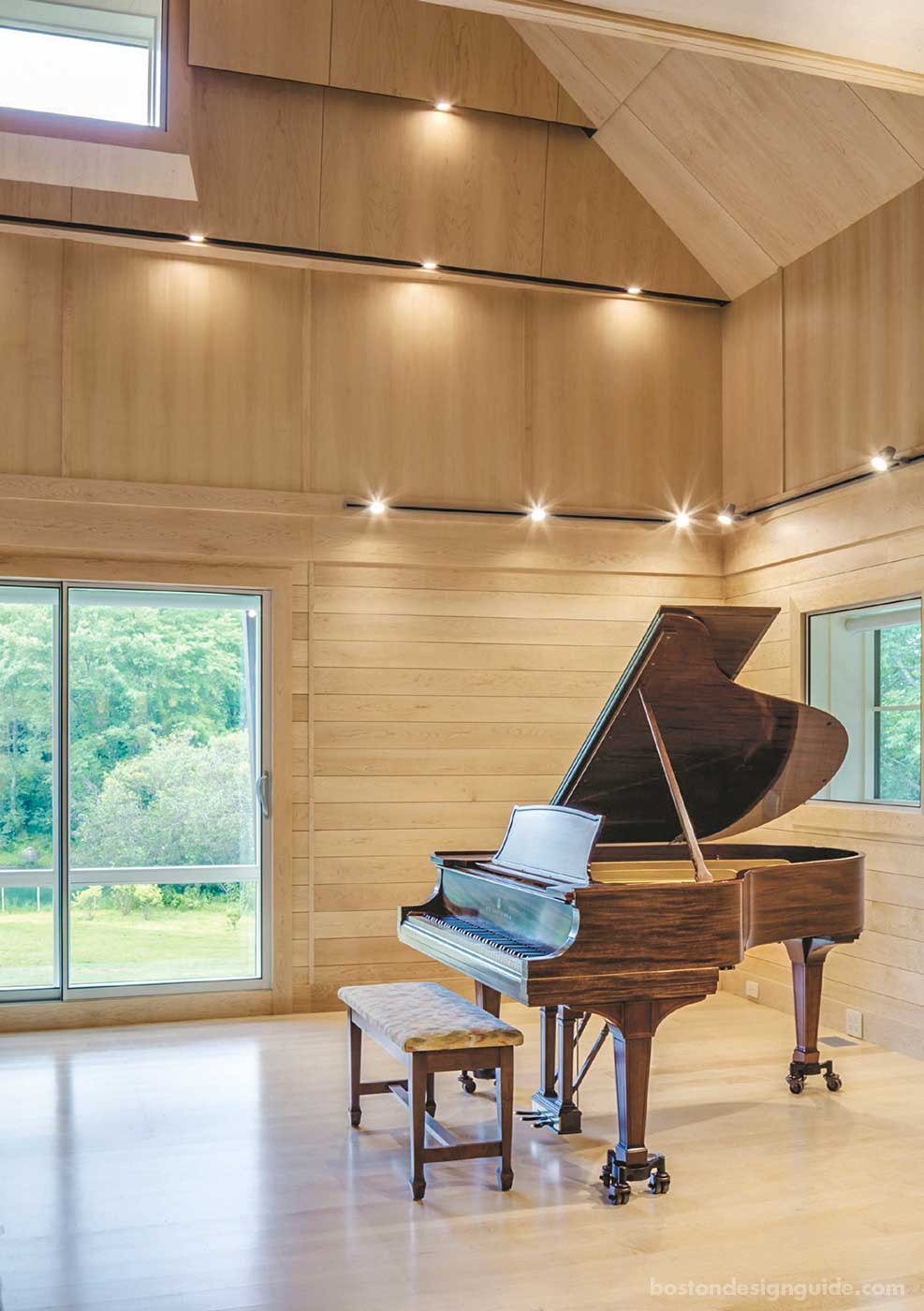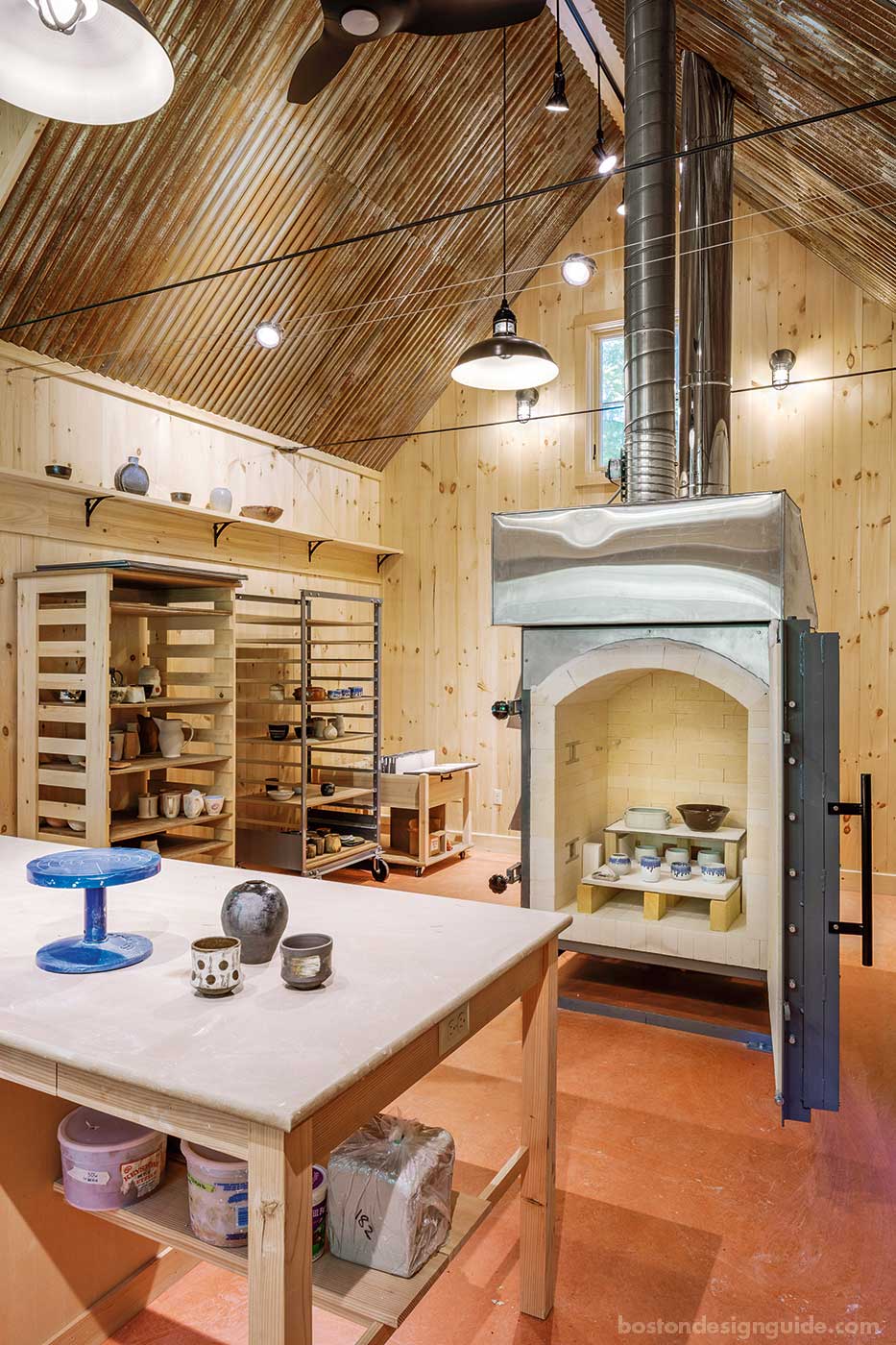February 26, 2019 | Sandy Giardi

“Artists are lively souls,” asserts architect John D. Battle of Battle Associates Architects, and he enjoys tapping into their creative spirits with his designs. Recently, he created a “farmhouse reinterpreted” on a New England countryside setting for a duo of artists who had known Battle’s work from the studios he designed for Bard College’s Fisher Art Center 20 years ago. They had tucked Battle’s name away until the time came to design their own creative spaces.
The musician of the home was treated to a clean-lined recording studio clad in wood (wood is an optimal sound conductor) with exquisite geometry and acoustics. As sound control was paramount to the project—the musician liked to play well into the night without disturbing the peaceful setting—Battle called in a sound consultant to advise the firm on matters of sound containment and isolation. This ‘must’ soon became “a design generator,” says Battle, informing the materials as well as the lines of the studio.
“No surface is parallel,” he explains, “and the roof is comprised of facets of plywood, each at a slightly different angle, so there is no sound reverberation.”

For another crafty soul, this one a ceramicist, Battle reimagined a portion of a horse barn he had built 15 years ago for a riding enthusiast. Now that the owner’s passion is pottery, an addendum was added to the barn for a ceramics studio (shown above) where the hobbyist could house a kiln.
The owner sought a higher volume for the studio space and a rustic, industrial character. To that end, Battle called for corrugated panels for the gabled roof, which he left out in the snow to get a rusty patina, and used wood on the lower portion of the space, which will age and darken over time. The materials “set the tone for how the space is going to work,” he shares, providing an invigorating and tailor-made setting for the owner’s craft.
Battle finds artists to be enthusiastic and expressive participants in the architectural process, making the journey rewarding for all. “It’s always fun because artists tend to be distinctive people who appreciate the details and the aesthetic,” he shares. “They are never interested in standard solutions.”
Photography by Greg Premru


Add new comment